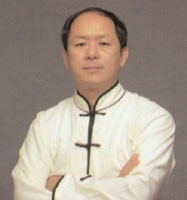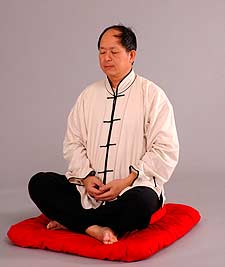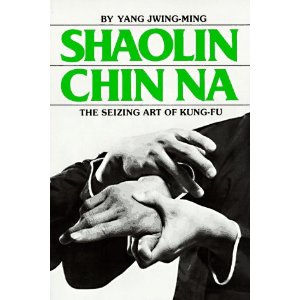Shaolin Chin Na by Dr. Yang Jwing-Ming
Mr.Yang Jwing-Ming is a Chinese martial artist who has become well known over the years. He has written numerous books on Tai Chi Chuan, Chi Kung, Chang Chuan and more. He currently lives and teaches in the USA.
This book, “Shaolin Chin Na” starts with a basic explanation of “Kung fu” and “Chin Na”. The former is well known where as the latter remains more obscure. The author explains Chin Na as the “seizing” and “controlling” of an opponent. He states four categories:
- Dividing the muscle
- Misplacing the bone
- Sealing the breath or vein
- Cavity press.
A detailed list of the origin of Chin Na is also given.
In the next two chapters, Mr. Yang covers the four categories mentioned above a bit more in depth. He also demonstrates different ways of training stances, hand forms, power and speed training. There is also a brief demonstration of different techniques against several forms of grabbing, called “Neutralization of pressure”.
After this comes a chapter on massage. Mr. Yang reasons that if you are willing to injure somebody, you must also be willing to treat the injury. This is not so much meant in a self-defense situation, but more towards keeping your training partner in good health. I feel there is some truth in this statement. The concept of “Chi” is also explained as well as the theory of massage and its applications.

The bulk of the material, Chin Na techniques, is covered in the next chapter. The author gives two important recommendations towards practitioners, which I find very valuable.
- First, the techniques are only formulas. They have to be practiced and studied with partners in a variety of circumstances. This will yield a better understanding of the matter and an overall increase in their efficiency.
- Second, techniques have to be trained with both the left and the right side. The fundamental techniques are then demonstrated with pictures, explanatory text and an indication of which type (of the four categories) it is.
After about 70 techniques, Mr. Yang talks about treating injuries caused by Chin Na. This subject has already been touched earlier but it is elaborated upon a bit more now. The author suggests massage, herbal treatments and re-aligning dislocated joints. I feel the author is treating this subject a little too lightly here. Re-aligning joints should be done with sufficient knowledge of the matter. Two pictures of pages and some text is hardly enough to make anyone competent in this field. An advanced first aid course would be more appropriate.
Another statement also made me raise my eyebrows: Mr. Yang claims that a cracked (as opposed to broken) bone usually doesn’t need medical attention and that it will probably heal itself in time. I am sad to say I have experienced a different reality. A few years ago, I cracked a bone in my wrist while delivering a palm strike. It took three months in a cast followed by surgery, another month in a cast and chiropractic attention to heal. Maybe my injury was the exception to the rule, but I doubt that. Regardless, in the litigious society we live in, it seems better to refer people to medical professionals instead of doing it yourself.
Mr. Yang continues this chapter with advanced Chin Na techniques of sealing the breath or vein. These are mainly chokes or strikes which block the respiration or blood flow of the opponent. Only 10 techniques are shown.
The second type of advanced technique is cavity press, which concerns vital points. There is an introduction to the theory and training methods for this category. He shows 36 points with pictures, text and a summing up of the different attacks to use on these points. Once again, Mr.Yang explains how to treat injuries resulting from this type of Chin Na.

The sixth chapter deals with self-defense applications using Chin Na. The author demonstrates techniques against a variety of punches and also knife attacks. Although there are some interesting things to be found here, I was not that impressed. Some techniques seem very hard to do in real life situations and others (especially the knife defense) are, in my opinion, unrealistic.
Two appendixes show a timetable for Chi and blood flow and a translation of Chinese terms. The book ends with a biography of the author.
Interest: This book is a good introduction to the subject but by no means the definitive work. Mr. Yang offers sound information, but is far from complete. He has written other books on this subject that are much better than this one. I would recommend them over this one.
Also, several subjects are a bit questionable. The treating of injuries, the self-defense applications and the chapter concerning cavity press are all incomplete in my opinion and I disagree with many things.
This is not a bad book, just one that could have been better. I doubt you can learn the techniques from this book, as they are rather complex, but as a reference work for students of Mr. Yang, it would be valuable. Or if you don’t want to spend the extra money on his more expensive material, this book could be right for you.
Quality: The lay out is good, but the pictures are a bit too dark. Mr. Yang and his assistant are wearing a black and white traditional Chinese outfit. This makes it hard to see details clearly.
Buy it here:
.



Bob Patterson says
I have the book and you are correct: You cannot learn Yang Chin Na from a book. It supplements the class I’m taking quite well, however.
Those advanced techniques take about five years to get to. So that’s probably why they are treated topically. Also sealing the breath/vein is just a small part of Chin Na.
I’ve not seen knife defense done live so I shall not comment. I have seen advanced techniques done and they are very complicated. So you have to balance realistic against the learning curve.
Want a faster track to grappling and self-defense? Study a grappling art like Judo or Jujitsu. Want to supplement your grappling and don’t mind hard study? Then Chin Na might be for you.
The Chin Na also “completes” many styles of Chinese Kung Fu.
I agree with you re: the medical advice. Go to a doctor!
Bob Patterson says
I have the book and you are correct: You cannot learn Yang Chin Na from a book. It supplements the class I’m taking quite well, however.
Those advanced techniques take about five years to get to. So that’s probably why they are treated topically. Also sealing the breath/vein is just a small part of Chin Na.
I’ve not seen knife defense done live so I shall not comment. I have seen advanced techniques done and they are very complicated. So you have to balance realistic against the learning curve.
Want a faster track to grappling and self-defense? Study a grappling art like Judo or Jujitsu. Want to supplement your grappling and don’t mind hard study? Then Chin Na might be for you.
The Chin Na also “completes” many styles of Chinese Kung Fu.
I agree with you re: the medical advice. Go to a doctor!
S.Smith says
Yeah, I’m a bigger fan of his Comprehensive ChinNa. But even there he demonstrates some moves that could work only on a willing victim/student. Even so, most are fine motions to train.
S.Smith says
Yeah, I’m a bigger fan of his Comprehensive ChinNa. But even there he demonstrates some moves that could work only on a willing victim/student. Even so, most are fine motions to train.
Wim says
I always liked what Dan Inosanto said: A joint lock works better on an unconscious opponent. :-)